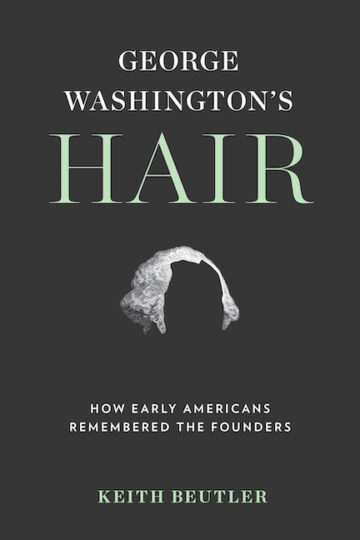Mostly hidden from public view, like an embarrassing family secret, scores of putative locks of George Washington’s hair are held, more than two centuries after his death, in the collections of America’s historical societies, public and academic archives, and museums. Excavating the origins of these bodily artifacts, Keith Beutler, PhD ’05, uncovers a forgotten strand of early American memory practices and emerging patriotic identity.
Between 1790 and 1840, popular memory took a turn toward the physical, as exemplified by the craze for collecting locks of Washington’s hair. These new, sensory views of memory enabled African American Revolutionary War veterans, women, evangelicals, and other politically marginalized groups to enter the public square as both conveyors of these material relics of the Revolution and living relics themselves.
George Washington’s Hair introduces us to a taxidermist who sought to stuff Benjamin Franklin’s body, an African American storyteller brandishing a lock of Washington’s hair, an evangelical preacher burned in effigy, and a schoolmistress who politicized patriotic memory by privileging women as its primary bearers. As Beutler recounts in vivid prose, these and other ordinary Americans successfully enlisted memory practices rooted in the physical to demand a place in the body politic, powerfully contributing to antebellum political democratization.

Comments and respectful dialogue are encouraged, but content will be moderated. Please, no personal attacks, obscenity or profanity, selling of commercial products, or endorsements of political candidates or positions. We reserve the right to remove any inappropriate comments. We also cannot address individual medical concerns or provide medical advice in this forum.